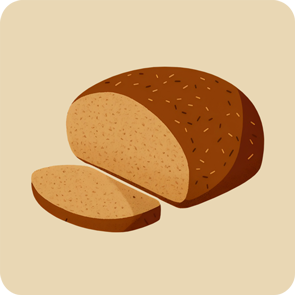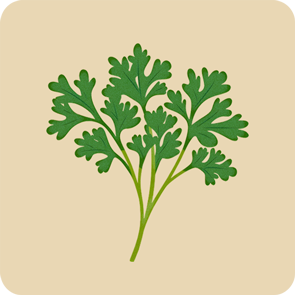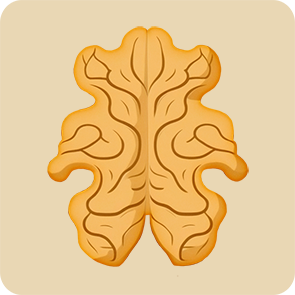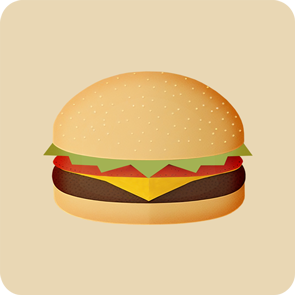Instructions 📋
(Calories & Nutrition)
Carbohydrates are the body’s main source of energy, found in foods like grains, fruits, and vegetables. They break down into glucose, which fuels your brain and muscles for daily activities.
A rating
Very low
B rating
Low
C rating
Moderate
D rating
High
E rating
Very high
Calories
Color-coded calories give you a quick visual snapshot of a food’s nutritional balance.
Low-calorie, low-fat, and low-carb foods are marked green for healthier choices, while high-calorie items show red.
Foods low in protein or fiber are also highlighted in red, signaling they may not keep you full or support balanced nutrition.
Nutriscore
The Nutri-Score is a simple, color-coded label designed to help you quickly understand the nutritional quality of food products.
It ranks foods from A (dark green, healthiest) to E (red, least healthy), taking into account factors like sugar, saturated fat, salt, fiber, and protein.
This makes it easier to make healthier choices at a glance.
Value per 100 grams & per cup (240g):
100 kcal / 240 kcal
Calories are the units of energy our bodies use to fuel every movement and process. While linked to weight, they’re really about energy balance — what you take in versus what you burn. Not all calories are equal: food type affects energy use, fullness, and nutrient support.
Protein
The average adult needs roughly 55–60 grams of protein per day.
To be precise: 0.8 grams x kg of your body weight.
Fats
The average adult needs about 70 grams of fat per day — roughly 30% of daily calories.
To be precise: 1 gram x kg of your body weight.
Carbohydrates
The average adult with moderate activity needs about 275 grams of carbohydrates per day — roughly 50% of daily calories.
To be precise: 3–5 grams x kg of your body weight.
Fiber
The average adult needs about 30 grams of fiber per day — roughly 12% of daily calories.
To be precise: ½ grams x kg of your body weight.
Sodium (Salt)
The average adult needs about 2,300 mg of sodium per day — roughly 1 teaspoon of salt.
To be precise: 1 mg x g of body your weight.
Sugar
The average adult should limit added sugar to about 25–50 grams per day. Roughly 6–12 teaspoons.
To be precise: 0.3–0.7 grams x kg of your body weight.
Cholesterol
The average adult should limit cholesterol to about 300 mg per day — roughly the amount in one large egg.
To be precise: ~4 mg x kg of your body weight.
Satiety and Feelings
Satiety is the feeling of fullness after eating, which helps control appetite, while different foods can affect how satisfied you feel and how long that feeling lasts.
What does 100 g look like?
Because foods are typically measured per 100 grams and most people aren’t sure what that looks like, we’ll provide a visual guide to make it easier to understand.
What does 2000/2500 calories look like?
To help put daily calorie needs like 2,000 or 2,500 calories into perspective, we’ll show what that looks like in everyday foods.
Daily Value per 100 grams or milliliters %
1. Vitamins & Minerals
Vitamins and minerals support overall health, from immunity to bones. In this system, a food’s top four nutrients are highlighted in green, showing their strongest contributions, though it’s just a quick snapshot.
2. Fiber
Fiber supports digestion, gut health, and fullness. Foods are coded red when fiber is low, showing they may lack these important benefits.
3. Protein
Protein helps build muscles, support immunity, and keep you full. Foods are marked red when protein is low, showing they may not provide enough of this key nutrient.
4. Sodium (salt)
Sodium is vital for fluid balance and nerve function, but excess can strain the heart and kidneys. Foods are coded green when low and red when high to highlight heart- and kidney-friendly choices.
5. Carbohydrates
Carbohydrates are the body’s main fuel, but foods are coded green when carbs are low to help manage calorie intake, highlighting lower-carb options without overlooking their role in a balanced diet.
6. Fats
Fats are essential for energy, brain function, and hormones. Foods are usually coded green when fat is low, but high-fat foods rich in heart-healthy monounsaturated fats can also get a green code.
7. Cholesterol
Cholesterol is vital for hormones and cell health, but high levels raise heart disease risk. Foods are coded green when low and red when high to guide heart-conscious choices.
8. Sugar
Sugars give quick energy, but too much can cause weight gain and health problems. Foods are coded green when low and red when high to highlight healthier choices.
Explore the Food Groups
Mattis nibh odio sed urna. Turpis suspendisse ullamcorper malesuada
















